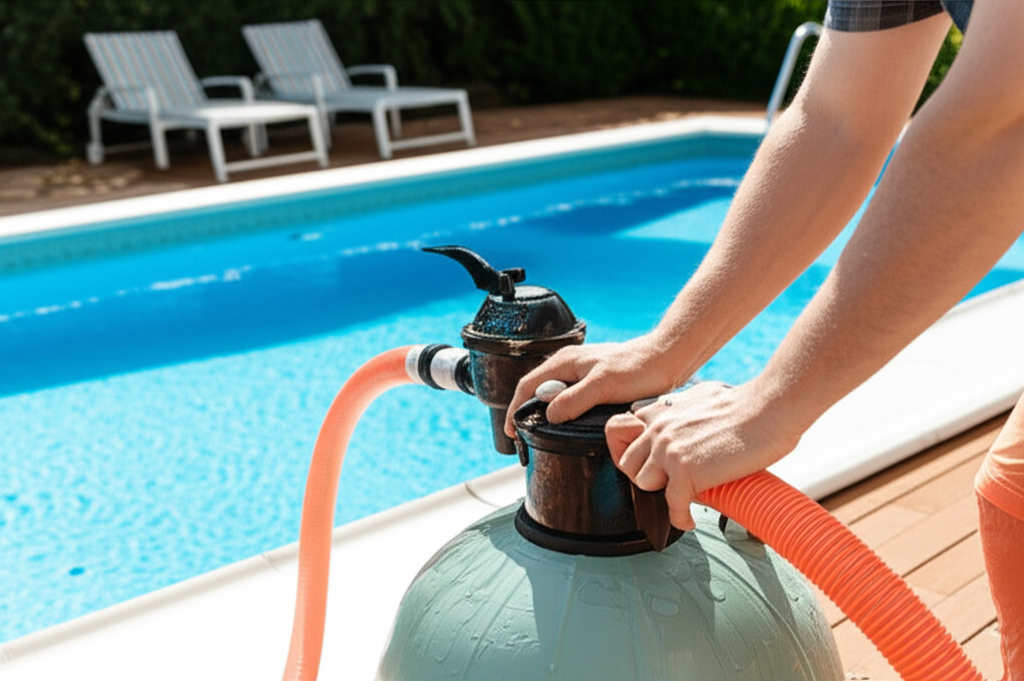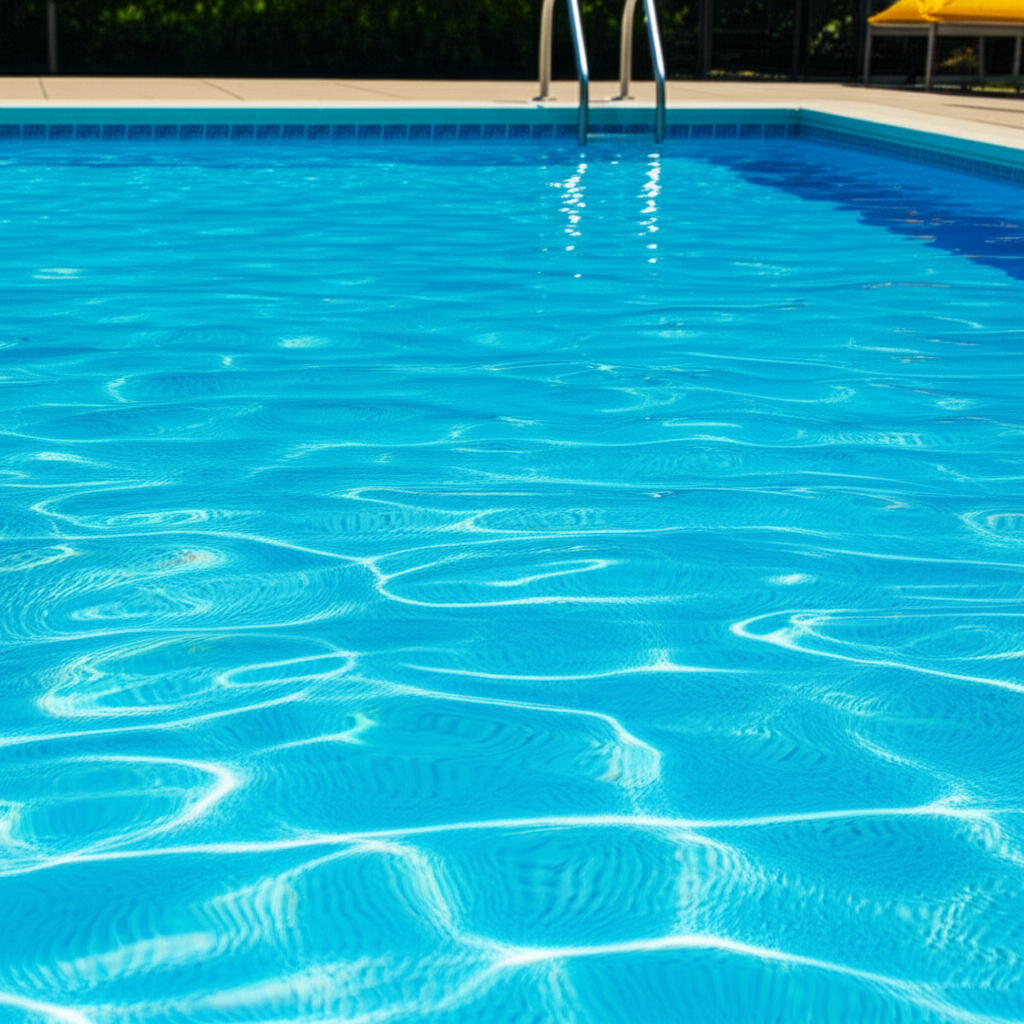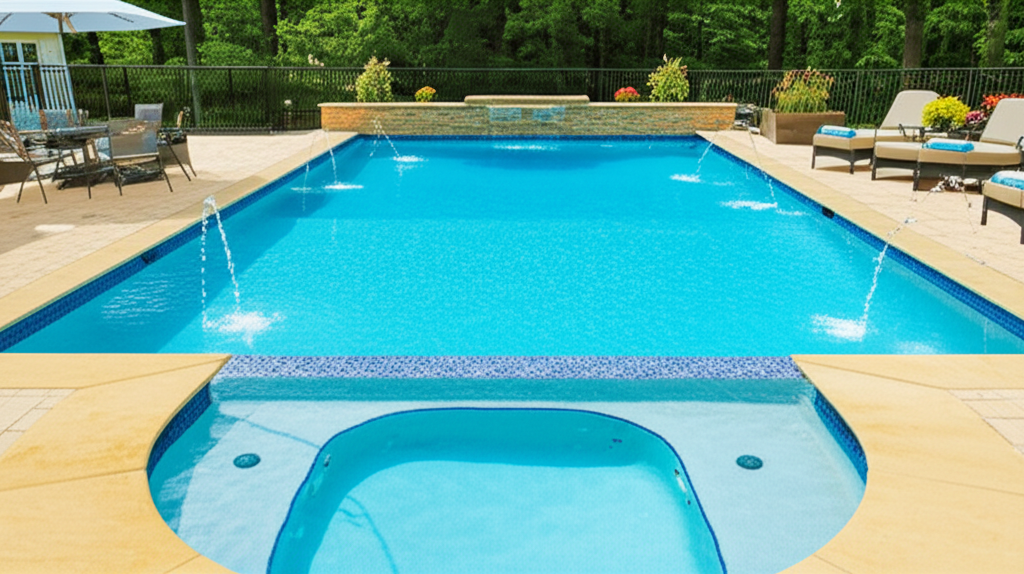Pool Backwashing: The Ultimate Guide to Maintaining Crystal Clear Water
Pool backwashing is a critical, yet often misunderstood, process essential for maintaining the clarity and hygiene of your swimming pool. It’s the primary method for cleaning your pool’s filter, ensuring it operates at peak efficiency. Understanding when and how to backwash properly is key to a sparkling, inviting pool and can save you significant time and money on future maintenance and repairs. This comprehensive guide will walk you through everything you need to know, from the “why” to the “how,” ensuring your filter lasts longer and your water stays pristine.
Why Pool Filters Need Regular Backwashing
Your pool’s filter acts as its kidneys, diligently removing impurities, debris, and microscopic particles from the water. Over time, these collected contaminants build up inside the filter medium (sand or diatomaceous earth/DE), reducing the filter’s efficiency. As the filter becomes clogged, water flow decreases, and the pressure inside the filter tank increases. This isn’t just about dirty water; a dirty filter also puts a strain on your pool pump, making it work harder and consume more electricity. Regular backwashing reverses the flow of water through the filter, flushing out the trapped debris and restoring the filter’s filtration capacity. This not only keeps your water clean but also extends the life of your filter medium and your entire pool system.
Understanding Your Filter Type and Backwashing
While all pool filters aim to clean your water, the backwashing process primarily applies to sand filters and Diatomaceous Earth (DE) filters. Cartridge filters, by design, do not backwash; instead, they require manual removal and cleaning of the cartridges.
Sand Filters: These are the most common type. Water flows down through a bed of specialized filter sand, trapping debris. During backwashing, water flows upwards through the sand, agitating it and flushing trapped particles out through a waste port.
DE Filters: These filters use a grid-like system coated with diatomaceous earth powder. DE particles are incredibly fine, offering superior filtration. Backwashing a DE filter removes the spent DE and trapped debris, after which a fresh charge of DE powder must be added.
When to Perform Pool Backwashing
Knowing when to backwash is crucial. Relying solely on a fixed schedule can lead to over-backwashing (wasting water and chemicals) or under-backwashing (reducing filter effectiveness). The most accurate indicator is your filter’s pressure gauge:
1. Pressure Gauge Reading: Note your “clean” operating pressure immediately after a thorough backwash or new filter startup. When the pressure gauge reads 8-10 PSI (pounds per square inch) above this clean baseline, it’s time to backwash. This increase indicates resistance due to trapped debris.
2. Visual Water Clarity: If your pool water is consistently cloudy despite proper chemical balancing, a dirty filter could be the culprit.
3. Reduced Water Flow: You might notice weaker skimmer suction or less vigorous returns from your jets.
4. Regular Schedule: While the pressure gauge is primary, a good rule of thumb for average use is to backwash every 1-4 weeks, adjusted based on bather load, weather, and debris levels.
The Step-by-Step Pool Backwashing Process
This detailed guide will ensure you perform Pool Backwashing effectively and safely.
1. Turn Off the Pool Pump: This is the most critical first step. Never move the multi-port valve handle while the pump is running, as it can damage the valve or the filter.
2. Move the Multi-Port Valve Handle to “Backwash”: Locate your filter’s multi-port (or slide) valve. Depress the handle (if it’s a push-pull valve, pull it up) and rotate it to the “Backwash” position. Ensure it locks securely into place.
3. Connect Waste Hose (If Applicable): If you don’t have a plumbed-in waste line, attach a backwash hose to the waste port to direct the expelled dirty water.
4. Turn On the Pool Pump: Power on your pump. You will immediately see dirty water flowing out of the waste line or sight glass (a clear window on the multi-port valve).
5. Monitor the Sight Glass: Watch the water flowing through the sight glass. It will initially appear cloudy or brownish with debris. Continue backwashing until the water flowing through the sight glass runs clear, which typically takes 1-3 minutes for sand filters. For DE filters, backwash until clear, then proceed to the “Rinse” step.
6. Turn Off the Pool Pump (Again): Once the water runs clear, turn off the pump before moving the valve.
7. Move the Multi-Port Valve Handle to “Rinse”: Rotate the handle to the “Rinse” position (some slide valves just push down for rinse).
8. Turn On the Pool Pump (Briefly): Run the pump for 30-60 seconds, observing the sight glass again. This important step helps resettle the sand filter media and flushes any remaining debris from the lines, preventing it from returning to the pool.
9. Turn Off the Pool Pump (Once More): Power down the pump.
10. Move the Multi-Port Valve Handle to “Filter”: This is your standard operating position. Secure the handle.
11. Turn On the Pool Pump: Your filter is now ready to resume normal operation.
12. (For DE Filters Only) Add New DE: After backwashing and rinsing a DE filter, you must add the appropriate amount of fresh DE powder through the skimmer. This re-coats the grids, allowing the filter to function properly.
Optimal Filter Maintenance Beyond Backwashing
While backwashing is crucial, comprehensive Filter Maintenance involves more than just flushing out debris.
Periodical Deep Cleaning: Every 3-5 years for sand filters, it’s recommended to replace the filter sand. For DE filters, grids should be removed and manually cleaned with a hose annually to remove stubborn grime and body oils.
Chemical Cleaning: Filter cleaning chemicals can be used periodically to remove oils, scale, and other build-up that regular backwashing can’t dislodge. Follow product instructions carefully.
Inspect Components: Regularly check the multi-port valve for leaks, inspect the pressure gauge for accuracy, and ensure all lines are free of obstructions.
Maintain Water Chemistry: Proper water chemistry—especially balanced pH and alkalinity—helps prevent scale buildup that can foul filter media.
Common Backwashing Mistakes to Avoid
Moving the Valve While the Pump is Running: As mentioned, this is a surefire way to damage your multi-port valve.
Not Backwashing Long Enough: Stopping too soon means leaving debris in the filter, reducing its effectiveness immediately.
Backwashing Too Often: Excessive backwashing wastes water, chemicals, and can prematurely wear down filter components. Rely primarily on your pressure gauge.
Ignoring the Rinse Cycle: Skipping the rinse for sand filters can send a burst of dirty water back into your pool after backwashing.
* Forgetting to Add DE (For DE Filters): Operating a DE filter without its diatomaceous earth coating will not only result in poor filtration but can also damage the filter grids.
By following this guide, you’ll master pool backwashing and other essential filter maintenance tasks, ensuring your pool water remains sparkling clear, healthy, and inviting all season long. A little effort in filter care goes a long way in preserving your pool’s longevity and your enjoyment.




